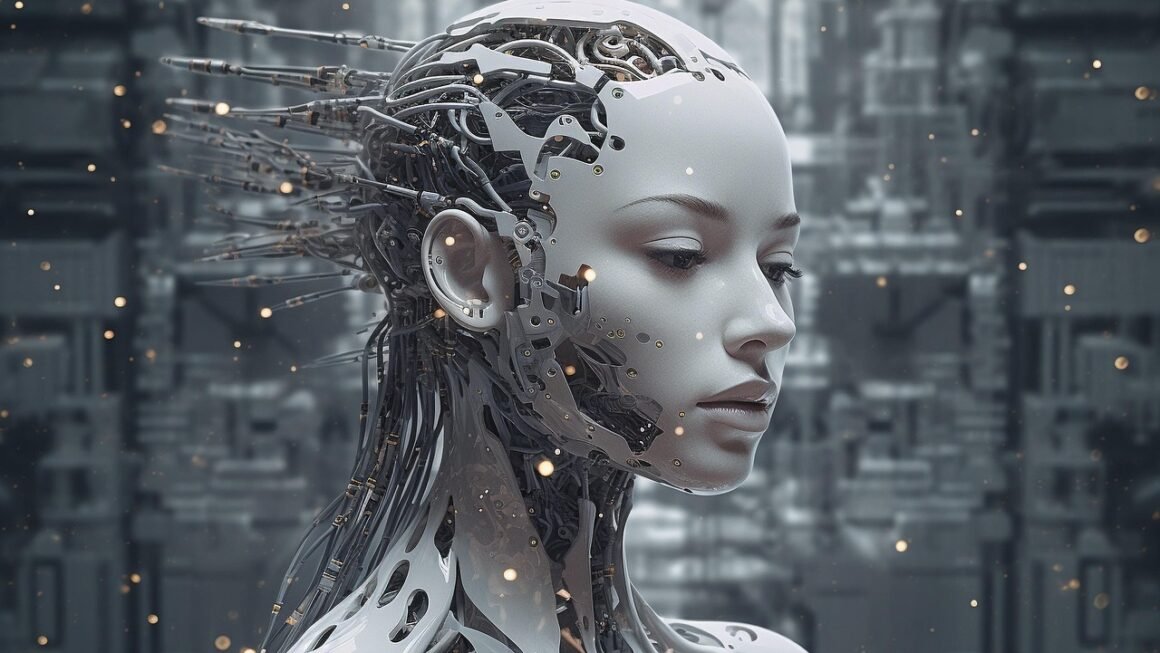Artificial intelligence (AI) is rapidly transforming the gaming industry, moving beyond simple scripted behaviors to create dynamic, immersive, and personalized gaming experiences. From smarter non-player characters (NPCs) that react realistically to player actions to AI-driven content generation that ensures endless replayability, the possibilities are vast and ever-expanding. This article explores the diverse applications of AI in gaming, examining its impact on gameplay, development, and the overall player experience.
AI-Powered NPCs: Smarter, More Believable Opponents and Allies
Enhanced NPC Behavior
AI allows developers to create NPCs that are more intelligent and realistic than ever before. Instead of following pre-programmed routines, AI-driven NPCs can adapt to the player’s actions and make decisions based on the current game state.
- Dynamic decision-making: NPCs can assess threats, strategize, and react intelligently to player actions.
- Realistic reactions: Facial expressions, body language, and dialogue can be dynamically generated to match the NPC’s emotional state and the situation.
- Improved teamwork: AI can coordinate NPC behavior, enabling them to work together effectively as allies or opponents.
- Example: In games like The Last of Us Part II, enemy AI exhibits complex behavior, flanking players, using cover effectively, and communicating with each other.
Emergent Gameplay
AI-driven NPCs can also contribute to emergent gameplay, where unexpected and unscripted events arise from the interactions between different agents in the game world.
- Unpredictable scenarios: The AI’s ability to react dynamically can lead to unique and unpredictable scenarios that enhance replayability.
- Persistent world: NPCs can remember past interactions with the player, leading to a more consistent and believable world.
- Personalized narratives: Player choices can influence NPC behavior and relationships, creating personalized narratives.
- Example: In Red Dead Redemption 2, NPCs remember previous encounters with the player and react accordingly, leading to dynamic and often humorous interactions.
Personalization through AI
AI can personalize NPC interactions based on the player’s playstyle, preferences, and past behaviors.
- Adaptive difficulty: The game can dynamically adjust the difficulty of encounters based on the player’s skill level, ensuring a challenging but not overwhelming experience.
- Tailored dialogue: AI can generate dialogue that is relevant to the player’s character, their current quest, or their relationship with the NPC.
- Customized challenges: AI can create unique challenges and quests that are tailored to the player’s playstyle.
- Example: Games are increasingly using AI to personalize the difficulty curve based on player performance. If a player consistently struggles, the game might subtly adjust enemy strength or offer more assistance.
AI in Game Design and Development: Streamlining the Creation Process
Procedural Content Generation (PCG)
AI-powered PCG techniques automate the creation of game content, allowing developers to generate vast and varied game worlds, quests, and characters with minimal manual effort.
- Level Design: AI can automatically generate levels based on developer-defined parameters, saving time and resources. Examples include generating terrain, placing obstacles, and designing puzzles.
- Character Creation: AI can create diverse and unique characters with varying appearances, personalities, and backstories.
- Quest Generation: AI can generate quests based on player progress and the game’s lore, providing endless replayability.
- Example: No Man’s Sky uses PCG to create a vast and explorable universe filled with procedurally generated planets, creatures, and resources.
AI-Assisted Art and Animation
AI tools can assist artists and animators in creating high-quality assets more efficiently.
- Style Transfer: AI can transfer the style of one image or animation to another, allowing artists to experiment with different visual styles.
- Pose Estimation: AI can estimate the pose of a character in an image or video, which can then be used to create animations.
- Motion Capture Enhancement: AI can enhance motion capture data, filling in gaps and smoothing out imperfections.
- Example: AI-powered tools are being used to upscale textures and improve the resolution of older games, making them look more modern.
AI-Driven Testing and Quality Assurance
AI can automate many of the tasks involved in game testing and quality assurance, helping developers identify and fix bugs more quickly.
- Automated Testing: AI agents can play the game and identify bugs, glitches, and performance issues.
- Bug Prediction: AI can analyze code and predict potential bugs, allowing developers to address them before they become a problem.
- User Behavior Analysis: AI can analyze player behavior to identify areas of the game that are confusing or frustrating.
- Example: Companies like Keywords Studios are leveraging AI to assist with game testing, identifying bugs and suggesting improvements to gameplay.
Improved Player Experience: Personalization and Immersion
Adaptive Game Difficulty
AI enables dynamic difficulty adjustment based on player performance and preferences.
- Real-time Difficulty Scaling: Adjust difficulty on-the-fly based on the player’s skill.
- Personalized Tutorials: Offer tailored tutorials based on areas where the player struggles.
- Dynamically adjusting enemy aggression: Increase or decrease how aggressively enemies pursue the player.
- Example: Many modern games offer adaptive difficulty settings that automatically adjust the game’s challenge based on the player’s performance.
Enhanced Accessibility
AI can improve game accessibility for players with disabilities.
- Real-time Transcription: Translate in-game audio into text for deaf or hard-of-hearing players.
- AI-powered Assistance: Provide assistance with complex tasks for players with motor impairments.
- Customizable Controls: Adapt control schemes to individual player needs.
- Example: AI can be used to automatically generate descriptive audio for visually impaired players, allowing them to understand the game world and events.
Advanced Analytics and Player Modeling
AI algorithms analyze player data to understand player behavior and preferences.
- Identify player churn risks: Target interventions to keep players engaged
- Optimize in-game purchases: Offer relevant content to the right players
- Understand drop-off points: Identify and address frustrating game areas
- Example: Game developers use AI-driven analytics to understand how players interact with their games, identifying areas where they struggle or lose interest.
Challenges and Future Directions
Ethical Considerations
- Bias in AI Algorithms: Ensuring AI algorithms are fair and unbiased to avoid perpetuating harmful stereotypes.
- Job Displacement: Addressing the potential impact of AI on game development jobs.
- Privacy Concerns: Protecting player data and ensuring responsible use of AI-driven analytics.
Technical Limitations
- Computational Cost: AI algorithms can be computationally expensive, requiring powerful hardware to run efficiently.
- Data Requirements: AI models require large amounts of data to train effectively.
- Explainability: Understanding why an AI model makes certain decisions can be difficult, making it hard to debug and improve.
Future Trends
- Deep Learning Integration: Further leveraging deep learning techniques for tasks such as image recognition, natural language processing, and reinforcement learning.
- AI-Generated Content: Developing more sophisticated AI models for generating diverse and high-quality game content.
- Personalized Gaming Experiences: Creating truly personalized gaming experiences that adapt to individual player preferences and playstyles.
Conclusion
AI is revolutionizing the gaming industry, offering unprecedented opportunities to create more immersive, engaging, and personalized gaming experiences. While challenges remain, the potential benefits of AI are undeniable, promising to transform the way games are designed, developed, and played. As AI technology continues to evolve, we can expect even more innovative and exciting applications in the years to come.



